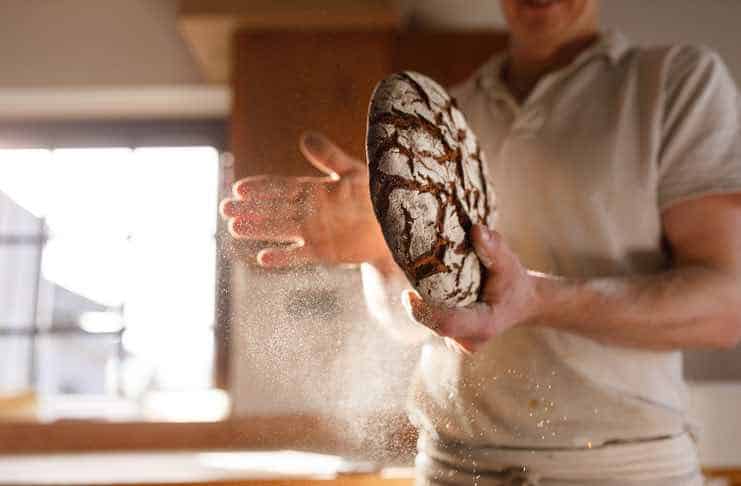Have you ever noticed that everything homemade ends up being vastly better than their store-bought alternatives? Why is that? A lot of store-bought foods come packed with preservatives to extend their shelf-life. Our grocery stores are jam-packed (no, that’s not a bad pun…) with food filling every aisle. For it not to go to waste, it has to be able to stay on the shelf for a decent amount of time.
However, over time, these preservatives can damage our bodies. Human bodies did not evolve to digest all these fake, processed ingredients, and chemicals!
Here are some reasons why making your bread can lead to a superior product and how to get started with it.
Save Money in the Long Run
If you take the time to price all the ingredients that go into making a loaf of bread, you’ll come out to about $0.96 a loaf. That amount is less than most loaves you can buy at a store.
A loaf of whole-wheat costs typically around $2, so making a loaf at home is nearly half the store-bought price! Also, all the ingredients you buy will make you two loaves, so you kill two birds with one stone and save yourself a trip to the store. The only real investment you’ll need to make is in a good bread maker.
Here is a great guide about some of the best bread makers you can buy.
Why Go Through the Trouble of Making Bread?
You might be wondering: if you can get a loaf of white bread from the store for about $1, why bother going through the trouble of making your own?
Imagine a slice of white bread: flat, lifeless, sticky in your mouth, and limp. Now imagine a loaf of fresh, out-of-the-oven bread: a fluffy, crunchy crust with a soft, airy inside that is lightly chewy and warm.
See the difference? Which would you rather have with your breakfast?
A good loaf costs about $4-5 or more. If you eat a loaf of bread every week, you’d be spending about $260 a year on buying bread vs $50 making it yourself.
You Choose What Goes Into It
While there are certain ingredients that you must have to make a loaf of bread, for the most part, you will know what is going into your loaf because you bought it yourself!
You can customize what herbs and supplements go into it (like fiber) and choose the flavor yourself. This flexibility is advantageous when you consider that most white bread is just starch and carbs, whereas homemade bread has more protein and fiber in it.
These super nutrients are good for your systemic health and are sure to keep your hunger at bay for longer.
How To Get Started Making your Bread
The essential ingredients of bread are flour (always better to go for whole wheat flour), water, salt, and yeast. The yeast is critical! It causes the process of fermentation, which releases gasses and allows the dough to rise. This process is vital for risen bread. Make sure you read through all the ingredients and instructions of a recipe before you get started, so you don’t get surprised by any steps.
Bread making is simple but not easy. It can take several hours, and very meticulous kneading and watching the oven to make sure it’s baking correctly. If you have a bread maker, you can make the whole process simpler and more convenient—perfect for making bread every day or every week, depending on how much you consume it.
You may also want to keep a journal or diary somewhere about your bread escapades. Each loaf tends to come out differently, so if you make a note of what worked and what definitely didn’t, you’ll have a better starting point for your next edition!
And – if you’re visiting the big apple – here are some of the best bakeries in New York City.
